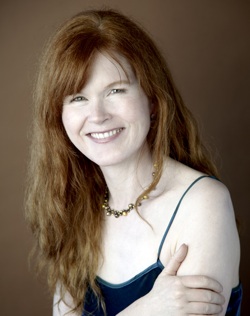Mozart in the morning
The Alexander String Quartet and musicologist Robert Greenberg regularly team up for an always-popular treat, mixing engaging lecture with fine performances. But last Saturday’s lecture/concert at the SFJazz Center had some extra pizzazz. Local legend Sarah Cahill anchored the group in two Mozart piano quartets. As a sought-after concert pianist and a long-time advocate for contemporary music (and many works have been composed for her), one wondered how she would approach one of the pinnacles of classical chamber music.
In a word, brilliantly.
But first, Greenberg enchanted us with history and humor. San Francisco Performances has been running this series for two decades, and each year they create new and inventive topics. In this year’s series, titled “Mozart in Vienna,” their first three concerts brought us Mozart’s stylish homage to Haydn, but in this fourth concert they embraced the difficulties of combining piano with strings.
At ten on that Saturday morning, a time not yet filled with the cares of the day, Greenberg delved into both the state of the composer and his era. And then we heard that emotional and social milieu translated into music.
Mozart’s relationship with his father was strained. Leopold, a violinist, took the young piano prodigy on extensive tours, earning himself enough income for a comfortable retirement. But as Mozart matured, Leopold resisted allowing him freedom to marry, perhaps fearing that it would cut into their arrangement. Greenberg described that tension in the two piano quartets.
“These were not just the best piano quartets of the eighteenth century, but among the greatest pieces of music ever written. They are artistic triumphs, but in their own time they were commercial disasters. Leopold harangued Mozart continually to keep his sights on what [could sell]. ‘For every ten connoisseurs there are one hundred ignoramuses,’ he wrote his son.”
But Mozart persevered, first in art and then in love, to create “chamber music with an orchestral power and gravity,” as Greenberg described it.
The Piano Quartet in G minor opened with stern chords from the strings answered by piano runs of light virtuosity, and it was a surprise that those delicate phrases had as much emotional heft as the stern. Perhaps Mozart was reflecting on his own disapproving parent and wrote himself into the piano’s lilting responses. Cahill inhabited those careful phrases, as light as a harpsichord, but deeply felt.
 The framework of dialog between piano and strings continued, even as the strings turned sweetly beseeching, and this was an opportunity to hear Frederick Lipsitz lead on the violin. Lipsitz usually plays second, and he is still more concerned with the overall balance than on his own virtuosity. Between his own careful gestures and the dryness of a hall that sucks the marrow out of strings, nuance was often a casualty.
The framework of dialog between piano and strings continued, even as the strings turned sweetly beseeching, and this was an opportunity to hear Frederick Lipsitz lead on the violin. Lipsitz usually plays second, and he is still more concerned with the overall balance than on his own virtuosity. Between his own careful gestures and the dryness of a hall that sucks the marrow out of strings, nuance was often a casualty.
In the second half they switched violinists to Zakarias Grafilo, their usual first violinist, without more success in a hall clearly designed for amplified jazz. But their combination was sufficient to transport us back in time, to a conflict that modern psychologists and ancient Greeks both grappled with.
After analyzing musical themes, Greenberg spoke further on Mozart’s life, reading us a letter to his father begging for his blessing to marry. Lacking that, he went ahead and wed Constanza Weber—and Leopold disinherited him! But Mozart’s music remained sublime, and his Piano Quartet in E-flat Major, written a year later, reflects his full and happy life. This work pushes the boundary of its genre. Greenberg aptly described it as “truly chamber music that attempts the dramatic sweep of orchestral music…the zenith of zest.” But, he continued, it also outlines the dramatic conflict of a father and son, with “rage and restraint, arrogance and submission… channeling his impulses into music.”
Listening to Cahill’s trickles and thunder, it was easy to hear those conflicts, of love and loyalty and rejection. Revered for his sublime oppositions, the direct simplicity of his melodies and his clever variations, Mozart rarely bares his soul. But when he pauses on a raised fourth, before touching on the fifth, that almost-resolution could be his jazz blue note, asking for rest in the waiting room of a heart.
—Adam Broner
Photo top of Robert Greenberg; bottom of Sarah Cahill, photo by Christine Alcino.
